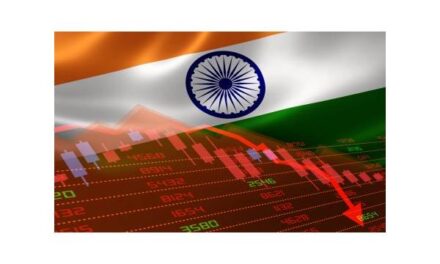 The Reserve Bank of India (RBI) said in its latest monthly bulletin that the country’s headline retail inflation, as measured by the consumer price index (CPI), will ease from 7 percent now to 5 percent by the first quarter (Q1) of the next fiscal within the tolerance band and hovering closer to the target, but ‘not yet positioned for landing’.
The Reserve Bank of India (RBI) said in its latest monthly bulletin that the country’s headline retail inflation, as measured by the consumer price index (CPI), will ease from 7 percent now to 5 percent by the first quarter (Q1) of the next fiscal within the tolerance band and hovering closer to the target, but ‘not yet positioned for landing’.
“With the trajectory of outcomes largely in line with projections, we expect momentum to ease from 3.0 percent in Q1 (April-June) to 1.7 percent in Q2 and further to 1.3 percent in Q3 and turn mildly negative in Q4 before picking up modestly and on seasonal food price effects to 2.2 percent in Q1 FY24,” the RBI said.
However, after April-June, the task before the Monetary Policy Committee (MPC) would be to guide inflation to its target of 4 percent. This may prove to be more ‘arduous’ than the loss of height into the tolerance band, the Central Bank said.
Though recent data showed India’s headline retail inflation rate, as measured by CPI, fell to a five-month low of 6.71 percent in July, it has now spent 34 consecutive months above the RBI’s medium-term target of 4 percent and seven straight months outside the bank’s 2-6 percent tolerance range.
A ‘heartening development’ in recent times has been the easing of inflation in July by 30 basis points from June and an ‘appreciable’ 60 basis points from the average of 7.3 percent for April-June 2022, the bulletin said.
This has validated the central bank’s hypothesis that inflation may have peaked in April. For the rest of the year, the RBI’s projections scent a steady easing of the momentum of price changes, it stated.
Another heartening development is the return of capital flows to India, RBI noted. India is becoming a preferred destination for portfolio flows, it said, stating that till August 12, equity and debt segments recorded net inflows of $4.4 bn and $0.3 bn respectively.
India is poised to sustain a growth differential vis-a-vis the rest of the world on the basis of several fundamental factors, including demographic dividend, increasing formalisation of the economy and digital financial inclusion, the bulletin added.










